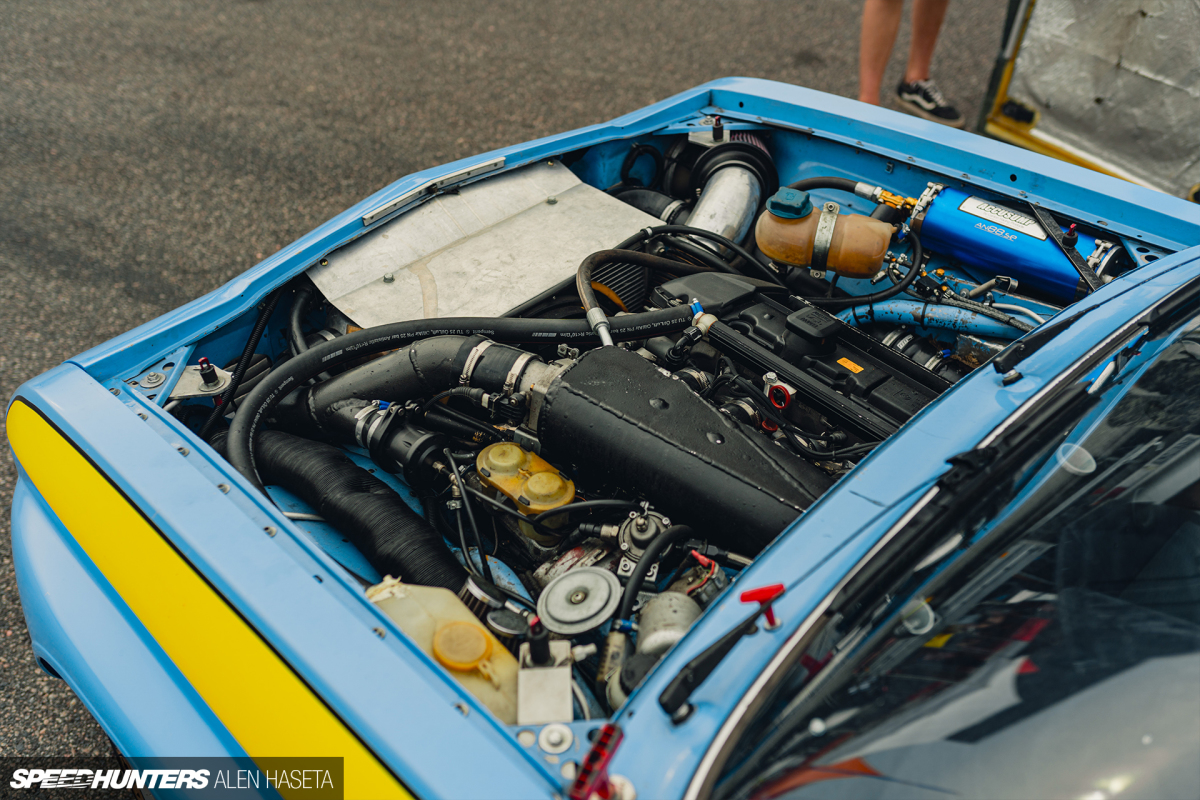
[ad_1]
When you think about time attack cars, what’s the first things that come to mind?
For me personally, it’s late ’90s Japanese tuner cars that look like they are ready to take flight, with more pointy carbon fiber bits and pieces than my imagination allows. Thanks, Dino.
For Håkan Olofsson from Sweden, it’s his 1975 Opel Ascona A. I caught up with the pair in the 2023 Gatebil Mantorp paddock.

Håkan first laid eyes on the Opel race car in 2012 while test driving his son’s BMW E36 at Kinnekulle Ring (located 152km from Gothenburg). The Ascona wasn’t for sale at the time, but a couple of months later it was, so Håkan did what any rational person would do and bought it straight away.

There were two previous motorsport competitor owners before Håkan, and from what he could tell they had both used it in the same basic track specification. It was missing its drivetrain and injectors, but that was of no real concern to Håkan as he had his own plans for the car.

From a naturally aspirated BMW M52B28 motor to a turbocharged BMW M50B25 engine, Håkan’s current setup is now built around a fully forged BMW S54B30 from an E46 M3 spitting out 754hp through a GearMotive BMW ZF S5D H-pattern dog box transmission.

You might have noticed that the engine sits quite far back in the bay, which is of course by design. Not only did positioning the engine more rearward open up room for an oil cooler, intercooler and large racing radiator, but the front of the inline-six now sits directly above the center line of the front wheels, resulting in 50/50 weight distribution over each axle.


For the current setup, most of the work was done by Håkan and his son Tobias, who are both well-versed in engine building. One of the few things they needed help with was machining the block, which now contains DP forged pistons in custom T-Parts sleeves, PPF Pro H-beam forged rods and more. It’s hard to see the turbo, but there’s a Precision 6266 hiding in the bay that goes nuts at 3,400rpm with 1.8bar (26.5psi) of boost.

The big-boosting M3 engine is a thirsty thing, and it’s suitably fuelled from the rear via a 50-litre Sellholm Tuning fuel cell with an integrated surge tank and two Bosch Motorsport 044 pumps. The fuel and spark is all controlled by a MaxxECU engine management system.


I first saw Håkan’s Opel running laps at Mantorp Park back in 2020, its wild custom exterior the first thing that caught my eye. The bubble-arched fenders were inspired by those seen in classic rallying, while the rear wing is comprised of half plastic/half aluminium stays and a Porsche 911 GT3 blade.

The Opel rides on GAZ coilovers, with the wheel and tire combos tucking under the fenders. I say combos, because Håkan has three setups to choose from – 16-inch BBS RS and 16-inch Compomotive wheels both shod in Kumho racing tires, and the setup pictured, which marries 17-inch BMW M5 Style 21 wheels with Yokohama Advan slicks.
As for the brakes, Porsche Boxter 4-piston callipers are used at all four corners with 330mm front and 265mm rear discs, and PFC pads. The car only weighs 1,120kg (2,469lb) fully wet, so it stops very well according to Håkan.

Inside, it’s all business. The entire interior was fully stripped and only racing essentials were put back in.


The seats, harnesses and steering wheel are by GP-Race, the shifter is a Coolerworx item, and the full cage came from Finess.se. These days, digital tablets and dedicated dash displays are commonplace in both contemporary and vintage race cars, but Håkan has kept it old school in his Ascona with analog gauges.

For Håkan, it’s not about being the quickest in the TimeAttackNu.se series. “There are a lot of fast cars and faster drivers, but I think I have the most fun,” he said.
Despite not always finishing first in his class, there are always people wondering why his smile is bigger than everyone else’s. Well, driving flat out, faster than some supercars, in a ’70s coupe that was never intended to be used as a race car is sure to put a grin on anyone’s face.
Alen Haseta
Instagram: <
[ad_2]









